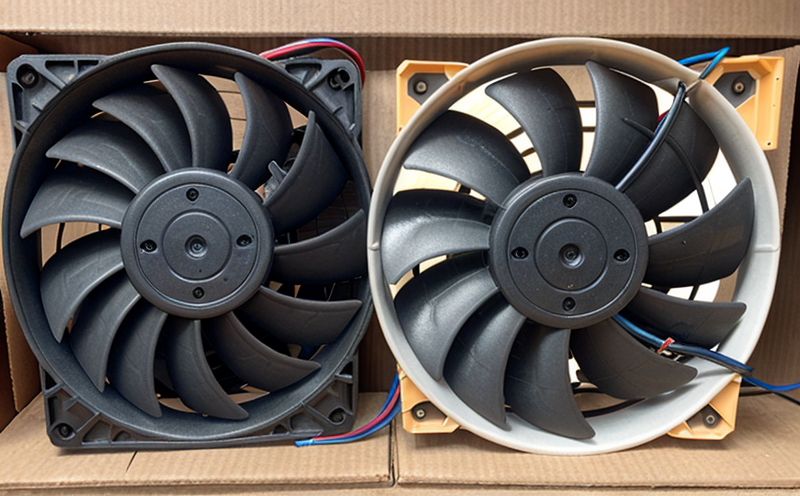Supply fan inspection
The supply fan inspection is a critical component of HVAC and ventilation system maintenance. Proper functioning of the supply fan ensures that fresh air is effectively distributed throughout the building, maintaining optimal indoor air quality (IAQ) and energy efficiency.
Inadequate or malfunctioning supply fans can lead to numerous issues such as insufficient airflow, noise generation, vibration, and increased energy consumption. These problems not only affect occupant comfort but also have significant implications for HVAC system performance and longevity. Therefore, routine inspections are essential to identify potential issues before they escalate into major problems.
The supply fan inspection typically involves several key steps: visual assessment, noise and vibration checks, measurement of air velocity at the fan inlet and outlet, and verification of fan speed and static pressure. These parameters are crucial for ensuring that the fan operates within specified limits set by industry standards like ASHRAE 55-2017 (Thermal Comfort in Office Spaces).
During a visual inspection, technicians look for signs of wear, corrosion, or damage to the fan blades and motor. This helps detect potential issues early on, allowing for timely repairs before they cause more extensive damage.
Noise levels are measured using sound level meters placed at various points around the supply ductwork. Excessive noise can indicate problems with the fan impeller or bearings, which may require lubrication or replacement.
Vibration measurements provide insight into the mechanical condition of the fan and its mounts. High vibration levels could suggest misalignment issues, bearing failures, or unbalanced rotors.
Air velocity measurement ensures that the supply fan is delivering sufficient airflow to meet design requirements. Using anemometers, technicians take readings at both the inlet and outlet of the fan to compare against expected values specified by ASHRAE 62.1-2019 (Ventilation for Acceptable Indoor Air Quality).
Finally, fan speed and static pressure are checked using pitot tubes and manometers respectively. These measurements help verify that the fan is performing as intended under different operating conditions.
The importance of these inspections cannot be overstated given their role in maintaining high levels of IAQ, reducing energy costs, extending equipment life spans, and ensuring compliance with relevant regulations and codes like ASHRAE 180-2021 (Guidelines for Building Operations, Maintenance, and Validation).
Regular supply fan inspections play a vital role in preventing costly repairs and downtime by catching small problems before they become major issues. By adhering to recommended maintenance schedules, building owners can ensure that their HVAC systems run smoothly and efficiently, contributing positively to overall sustainability efforts.
Scope and Methodology
| Parameter | Description |
|---|---|
| Visual Inspection | Checking for signs of wear, corrosion, or damage to the fan blades and motor. |
| Noise Measurement | Measuring noise levels using sound level meters placed at various points around the supply ductwork. |
| Vibration Measurement | Checking vibration levels to indicate mechanical condition of fan and mounts. |
| Air Velocity Measurement | Taking readings at both the inlet and outlet of the fan to compare against expected values. |
| Fan Speed Check | Verifying that the fan is operating within specified limits using pitot tubes. |
| Static Pressure Verification | Ensuring the fan meets expected performance standards with manometers. |
International Acceptance and Recognition
The supply fan inspection is widely recognized in many international standards, including ASHRAE (American Society of Heating, Refrigerating and Air-Conditioning Engineers) guidelines. Compliance with these standards ensures that HVAC systems operate efficiently and effectively, contributing to both occupant comfort and energy conservation.
Other relevant bodies include the International Organization for Standardization (ISO), which provides global technical specifications and references for various industries. For example, ISO 14001 focuses on environmental management systems, emphasizing the importance of maintaining efficient HVAC operations as part of overall sustainability practices.
The European Committee for Standardization (CEN) also plays a significant role in setting standards across Europe. Their EN 13782 standard covers air handling units and related equipment, providing detailed specifications for proper installation, operation, and maintenance.
These international accreditations provide assurance that the supply fan inspection adheres to best practices recognized worldwide. By ensuring compliance with these standards, building managers can rest assured that their HVAC systems are operating optimally and meeting all necessary requirements for safety, efficiency, and sustainability.
Competitive Advantage and Market Impact
The supply fan inspection offers significant advantages in the competitive market for HVAC services. By providing thorough inspections that go beyond basic maintenance checks, service providers can demonstrate their commitment to delivering superior quality and reliability.
This level of expertise allows them to differentiate themselves from competitors who may offer less comprehensive or lower-quality services. Clients appreciate knowing they are receiving inspections performed by professionals who understand the nuances of HVAC systems and can identify potential issues early on.
Furthermore, adherence to international standards such as ASHRAE 55-2017 and ISO 14001 not only enhances a company’s reputation but also helps attract clients seeking environmentally responsible solutions. This focus on sustainability aligns with growing trends towards greener buildings and reduced carbon footprints.
The supply fan inspection service contributes positively to market impact by promoting energy efficiency, reducing operational costs, and extending the lifespan of HVAC equipment. As organizations increasingly prioritize these factors, businesses offering such services stand out as valuable partners in achieving long-term success.





